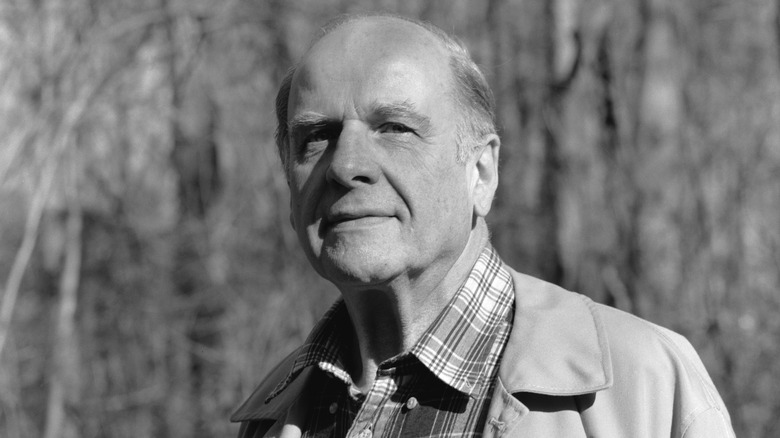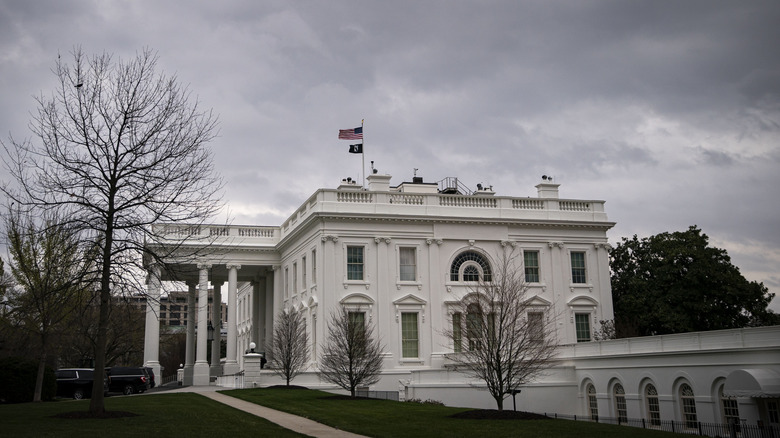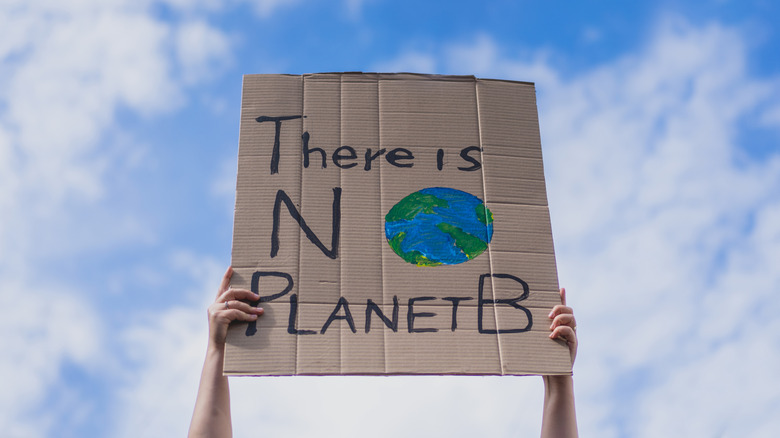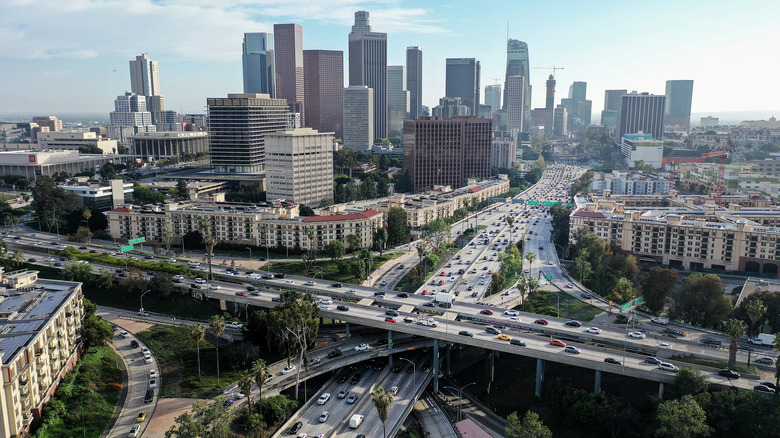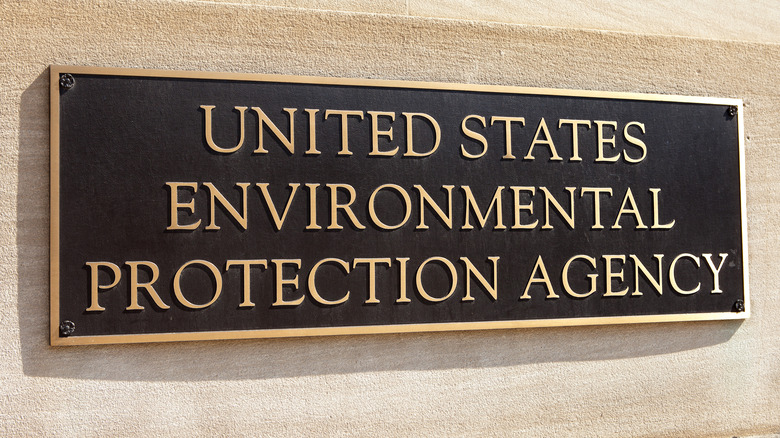How Earth Day Led To The Establishment Of A Government Agency
Environmental activism is an ongoing part of American politics. It might seem like it's been around forever, but the reality is that it took centuries for humans to understand the impact we've had on the world around us. Once we did, though, the work began to repair damages to the environment. While those efforts to preserve our environment have faced plenty of pushback and denial over the past few decades, it doesn't change the fact that improvements have been made. And a lot of that work still continues today.
We now celebrate Earth Day every year, but (per the Environmental Protection Agency — EPA) the holiday didn't even exist until the 1970s. And while the EPA currently watches out for environmental risks throughout the United States, it wouldn't have existed without the holiday to promote awareness. The agency's history comes down to the work of one man who wanted to bring national attention to the need for change.
The man who made history
Earth Day and, by extension, the EPA wouldn't be possible without the efforts of one man: U.S. Senator Gaylord Nelson. Nelson pushed for the first Earth Day to take place, according to the EPA. He wanted to bring a conversation about the importance of environmental stewardship to the forefront of American politics, and the EPA estimates his efforts led to 20 million people marching on the streets in several U.S. cities at once on the first-ever Earth Day in 1970.
It still took a little while for the EPA to be created, although it came about faster than the pace we're used to nowadays. Within the same year, the U.S. Congress brought up a proposal to create an agency that would serve as a regulatory entity aimed at protecting the environment. The legislation eventually passed in December 1970 (via EPA). It seems Senator Nelson had plenty of people on his side in his efforts to bring about change.
Wide-ranging support for reform
Senator Nelson wasn't the only one hoping to enact change on the environmental front. Changes to the government's departments and regulatory missions had been in the works during the previous decade, according to the EPA. Even before Earth Day took place, lawmakers were considering the ways they could make significant improvements in the ways the nation treated the natural environment.
President Richard Nixon made remarks on the issue on New Year's Day in 1970, according to the EPA's records. Before the first Earth Day, and before efforts to introduce the formal EPA began, Nixon described the 1970s as "the years when America pays its debt to the past by reclaiming the purity of its air, its waters, and our living environment" (via EPA). He went so far as to describe the need for reform as "now or never." So even if Senator Nelson was the one pushing for Earth Day celebrations, he was doing so in a political landscape where those issues were already on the minds of many in power.
The early years
Just as President Nixon predicted, environmentalism hit its stride in the early 1970s. The Environmental Protection Agency considers its first three years of existence as a time of change for the country as a whole. Politicians began to incorporate messages about clean air and water into their campaigns, and more and more bills, like the Clean Water Act, were introduced into the public eye. And the public was ready to hear it.
Senator Nelson knew there was widespread support for environmental protection. But even he was surprised by the massive turnout on that first Earth Day in 1970, when millions gathered to voice their concerns about diminishing natural resources.
"My primary objective in planning Earth Day was to show the political leadership of the Nation that there was broad and deep support for the environmental movement," Nelson said. "While I was confident that a nationwide peaceful demonstration of concern would be impressive, I was not quite prepared for the overwhelming response that occurred on that day." In the decade that followed, the U.S. government created a dozen laws to increase protections for the environment, according to Nelson.
Changing the narrative
Earth Day and the creation of the Environmental Protection Agency marked an important shift for the United States. Although Senator Nelson and President Nixon were working to bring environmental preservation to the forefront, the country had a bit of a reputation for the environmental damage it had caused in the past. According to Time, the U.S. was responsible for the use of 40% of natural resources on the planet in 1970. That's despite the fact the country only housed about 6% of the global population.
Before the wave of new legislation and regulations, companies in the U.S. were known for spilling chemicals into water sources and polluting the air with toxic smoke (via Environmental Protection Agency). The industrialization the country was so famous for, with inventions like the automobile, came back to bite its residents in the form of pollution, and it took a massive and joint effort from lawmakers and citizens alike to bring those issues to the forefront.
What the EPA does now
The Environmental Protection Agency has come a long way since it was first founded. It now handles a substantial budget that goes toward research and grant funding for projects around the country. Beyond that, it ensures businesses are following laws that can protect the world around us from dangerous chemicals and pollution. What started as a march made up of millions of concerned citizens has become an annual tradition, as every Earth Day renews conversations about how to better follow that mission.
But the EPA isn't the only agency doing this work. While it does the work nationally to protect the environment, it also relies on state and local organizations to help with smaller issues. Departments like the U.S. Fish and Wildlife Service focus on how to protect animals and prevent invasive species, according to the EPA, and various other government and nonprofit agencies engage in additional efforts that help to keep the world green.

